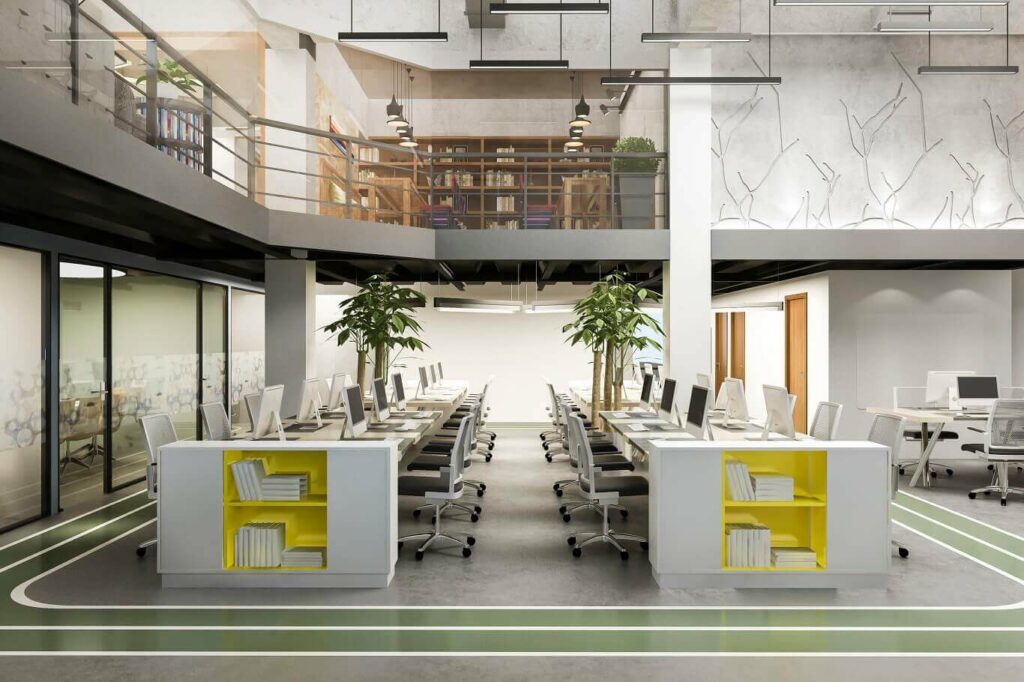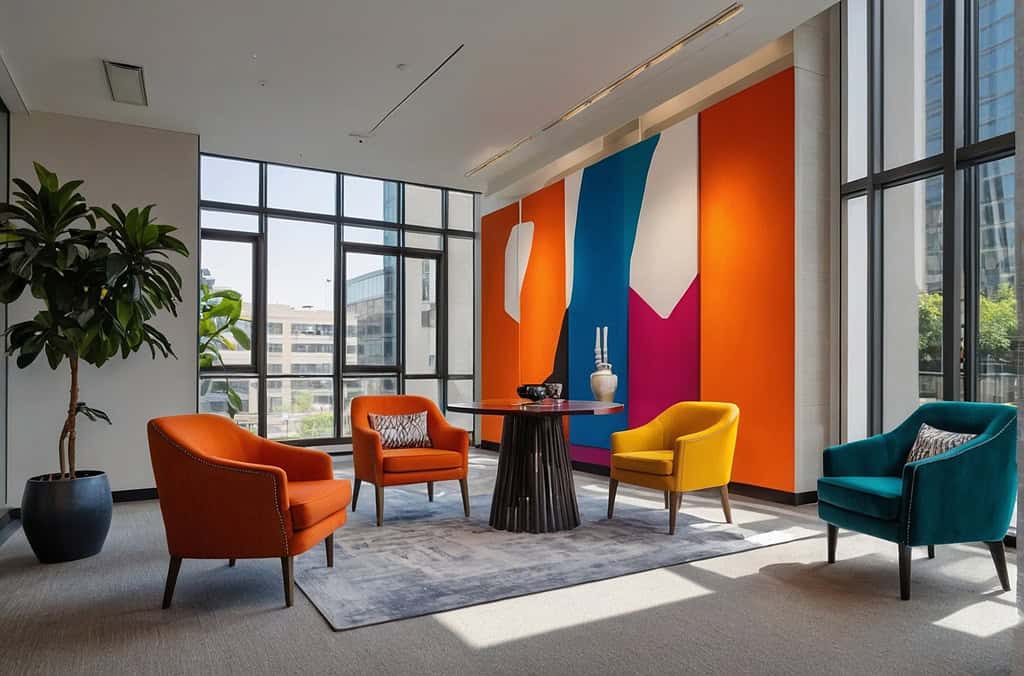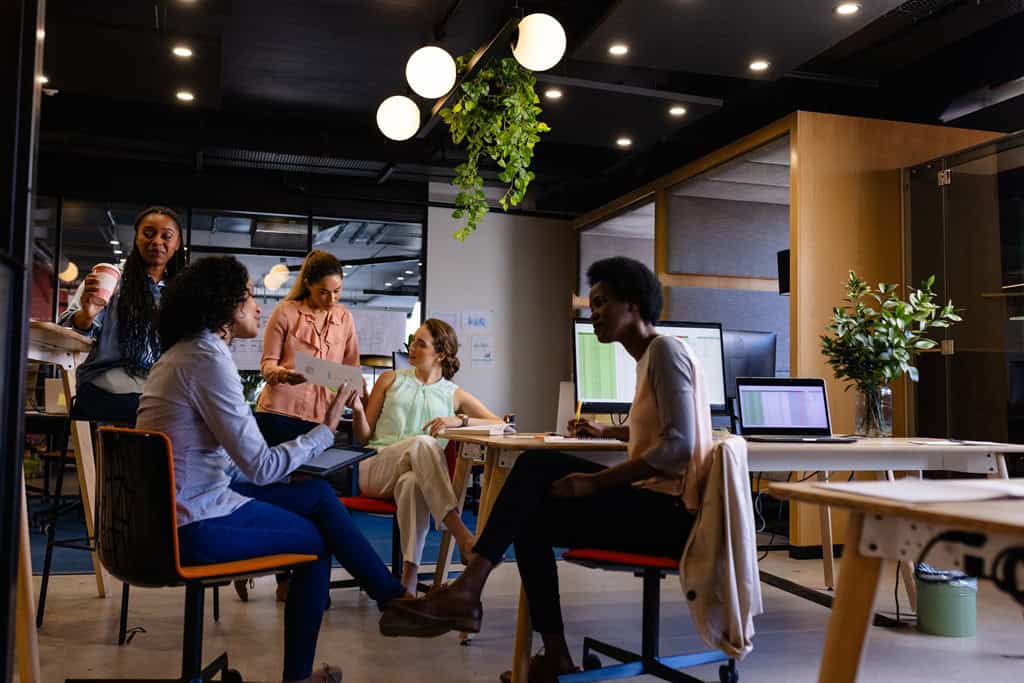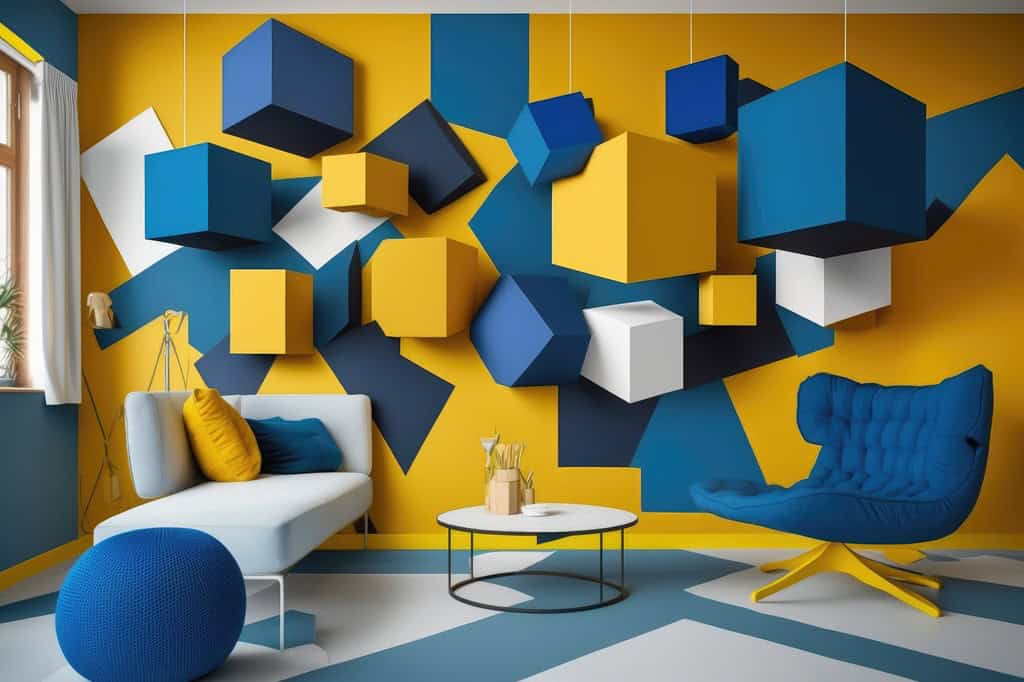Hey there! So, some folks argue about how offices should be set up. It’s like a big debate! On one side, there’s the “open office” crew. They like big shared spaces where everyone can see each other and work together. On the other side, there’s the “closed office” team. They prefer separate spaces or cubicles for more privacy.
People chat about it because the way an office is set up can affect how well everyone works together. The open crew says it helps people collaborate better, but the closed crew thinks it might be too noisy and distracting. It’s like deciding if you want to work in a big team huddle or have your quiet spot.
So, It is all about finding the best way for everyone to work happily and get stuff done in the office!
Understanding Open Office Design
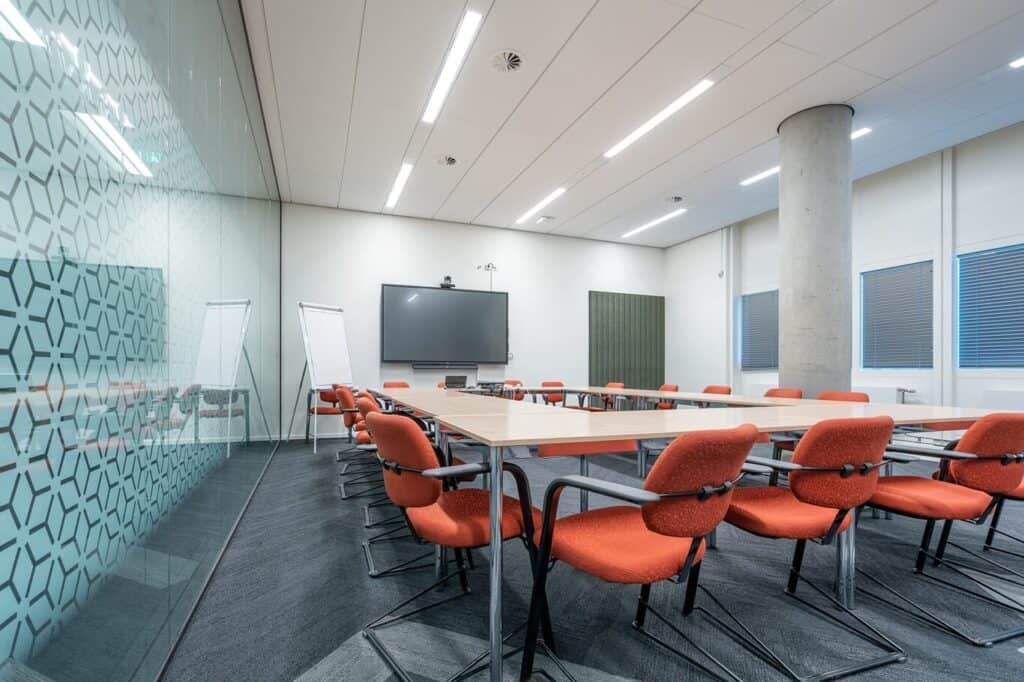
Open office interior design ideas refer to a workplace layout where employees work in a shared and collaborative environment without the physical barriers of walls or cubicles. In an open office, desks and workstations are often arranged in a more communal fashion, promoting interaction and communication among team members.
The aim of this office design is to create a more transparent and collaborative workspace, fostering a sense of unity and teamwork among employees. This layout is often associated with increased visibility, flexibility, and a more dynamic flow of ideas and information within the workplace.
The Characteristics of Open Office Interior Design Ideas
1. Shared Workspaces: Employees typically work at communal desks or tables in an open layout rather than having individual enclosed offices.
2. Fewer Physical Barriers: The absence of high cubicle walls or separate office interior design ideas encourages visual connectivity and promotes a sense of openness.
3. Collaborative Zones: Designated areas for team collaboration, meetings, or group discussions are often integrated into the open space.
4. Flexibility in Seating: Employees may have the flexibility to choose where they work, moving between different workstations or collaborative areas based on their tasks or preferences.
5. Casual Meeting Spaces: Informal areas, like lounge spaces or coffee corners, are integrated to facilitate spontaneous conversations and informal meetings.
6. Team-oriented Furniture: Furniture is often designed to accommodate group activities, with options like collaborative tables and flexible seating arrangements.
While open office interior design ideas have advantages, it’s important to consider individual work preferences and the need for privacy, as some tasks may benefit from a more secluded environment. The key is to strike a balance that aligns with the specific needs and culture of the organization.
Pros and Cons of Open Office Design
Certainly! Here’s a table summarizing the pros and cons of open office design:
| Pros of Open Office Design | Cons of Open Office Design |
|---|---|
| Encourages collaboration | Noise and distractions |
| Facilitates communication | Lack of privacy |
| Cost-effective | Health concerns (e.g., illness spread) |
| Flexibility in space usage | Reduced productivity for focused tasks |
| Enhanced visibility | Limited personal space customization |
| Efficient resource sharing | Stress and overstimulation |
| Positive company culture | Difficulty in managing teams |
Understanding Closed Office Design
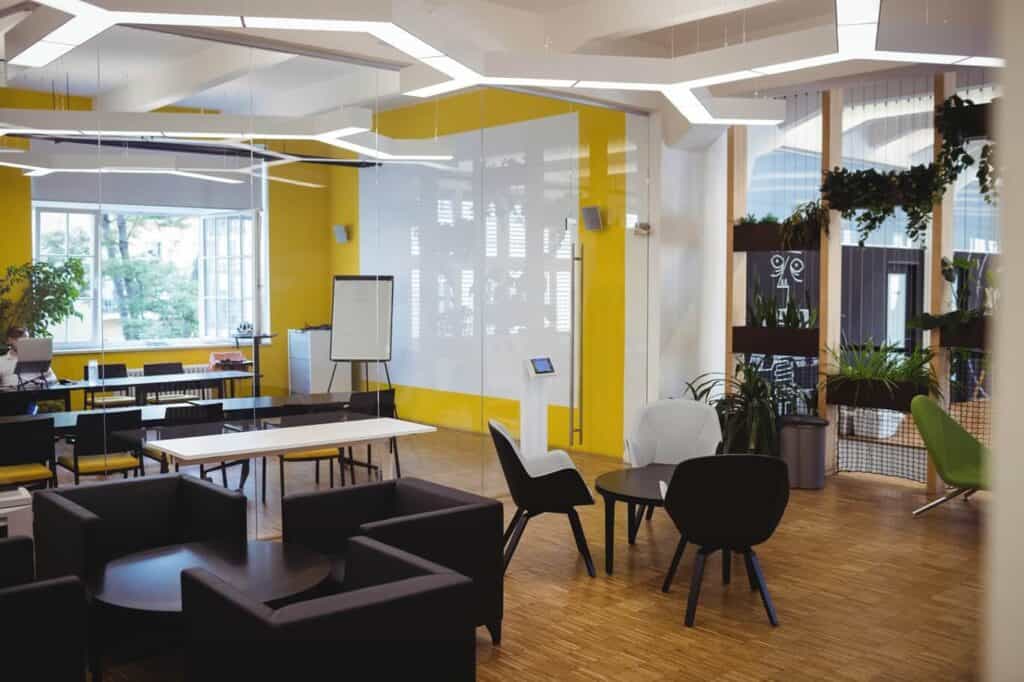
Closed office interior design refer to a workplace layout characterized by the use of individual offices or enclosed cubicles to provide employees with separate and private workspaces.
In office interior design, each worker typically has their own designated and partitioned area, creating physical barriers that offer a level of privacy and seclusion from the surrounding work environment.
This layout contrasts with office interior design ideas, where barriers are minimized, and employees work in shared, collaborative spaces. Closed office interior design ideas are often chosen to address the need for focused work, confidentiality, and minimized distractions for certain job functions.
The Characteristics of Closed Office Interior Design Ideas
1. Individual Workspaces: Employees have their own private offices or enclosed cubicles, providing a dedicated and personal workspace.
2. Physical Barriers: High walls, partitions, or even separate office room designs create distinct boundaries between individual workstations, offering a higher level of privacy.
3. Quiet Environment: Closed office designs often result in a quieter work environment compared to open layouts, allowing for increased focus and concentration.
4. Confidentiality: The enclosed nature of individual workspaces promotes confidentiality, making it suitable for tasks that require discretion or handling sensitive information.
5. Personalization: Employees often have more control over personalizing their workspace, including decorations and arrangement of furniture.
6. Reduced Distractions: Limited visual and auditory distractions contribute to a more controlled environment, allowing for undisturbed work on individual tasks.
7. More Storage Space: Closed office designs typically provide more storage options, including cabinets, shelves, and personal filing systems within individual workspaces.
8. Flexibility in Furniture Arrangement: Employees may have more freedom to arrange their furniture and create a personalized and ergonomic workspace.
Pros and Cons of Closed Office Design
| Pros of Closed Office Design | Cons of Closed Office Design |
|---|---|
| Individual Workspaces: Provides dedicated and private workspaces for employees. | Limited Collaboration: This may hinder spontaneous collaboration and communication compared to open layouts. |
| Confidentiality: Ideal for tasks that require privacy and handling sensitive information. | Isolation: Employees may feel isolated or disconnected from their colleagues due to physical barriers. |
| Focused Work Environment: Supports tasks that require deep concentration and focus. | Reduced Visibility: Management may have less visibility into daily activities and interactions among employees. |
| Controlled Environment: Less susceptible to noise and distractions, contributing to a quieter work environment. | Potential Hierarchy Emphasis: The layout may visually reinforce organizational hierarchy based on office size or location. |
| Personalization: Employees have more control over personalizing their workspace. | Limited Natural Light: Enclosed spaces may limit access to natural light, potentially impacting mood and well-being. |
| Enhanced Security: Controlled access to closed offices may enhance overall security within the workplace. | Limited Flexibility: The layout may be less adaptable to changing team sizes or project requirements. |
| Reduced Spread of Illness: Physical separation may reduce the risk of illness transmission among employees. | Space Inefficiency: Individual offices may require more space, potentially resulting in higher real estate costs. |
| Ask-specific Zones: Designated areas for specific tasks, such as meetings or focused work, can be incorporated. | Resistance to Change: Employees accustomed to closed offices may resist transitioning to more open or flexible layouts. |
It’s important to note that the suitability of closed office design depends on the specific needs and preferences of the organization and its workforce. Some workplaces may benefit from a blend of open and closed spaces or adopt flexible designs to address diverse requirements.
Conclusion
In the dynamic landscape of office design, there’s no one-size-fits-all solution. The choice between open, closed, or hybrid designs depends on the unique requirements and culture of the organization.
Hybrid office designs offer a versatile compromise, providing the flexibility needed to create a workspace that aligns with the organization’s goals and the preferences of its employees. Ultimately, finding the middle ground involves thoughtful consideration of the specific challenges, tasks, and collaborative dynamics within the workplace.
It’s about creating a workspace that supports productivity, fosters collaboration, and enhances overall employee satisfaction.
You Can Create Office Interior Designs with Officebanao

If you’re thinking about giving your office room interior design a whole new look, consider reaching out to the talented folks at Officebanao. They’ve got a team of experts who know all about contemporary office wall design. Using their own cool technology and loads of experience in office interior design for small offices, they’re really good at coming up with fresh ideas to spruce up your workspace.
Whether it’s giving your walls a modern makeover or creating a vibe that matches your company’s style and goals, they’ve got you covered. They’re all about making sure your office looks awesome and fits your brand perfectly.

